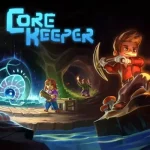Popular Now
Introduction
Poppy Playtime isn’t just about survival—it’s about solving a deadly mystery wrapped in puzzles, audio logs, and twisted remnants of childhood joy. From creepy corridors to malfunctioning toys that act on their own, every chapter increases in complexity. While beginners focus on mastering the GrabPack or escaping Huggy Wuggy, seasoned players aim for efficiency, hidden lore, and anticipating the game’s psychological traps. In this expert guide, we’ll explore advanced strategies to beat Poppy Playtime like a pro—making each chapter smoother, smarter, and even more immersive.
1. Optimize Your Movement for Chase Sequences
When the toys come to life and the chase begins, your ability to move quickly and accurately becomes the most critical skill.
You need to understand the chase layout in advance. That means noticing small environmental cues like warning arrows, glowing doors, or recently opened paths. Many players die not because of slow movement, but from turning the wrong way during a chase.
Practice smooth turning with your mouse or controller and pre-emptively identify junction points where you’ll have to choose left or right. Avoid jumping unless it’s required—jumping slows you down in tight corridors.

2. Memorize Puzzle Patterns Across Playthroughs
Each chapter of Poppy Playtime includes several types of puzzles—color codes, wiring challenges, memory tests, and physical interactions. These aren’t just random—they follow patterns.
Replay chapters to memorize specific puzzles. The wire-routing puzzles, for instance, often reuse similar paths. The more familiar you are, the faster you'll solve them without trial-and-error, saving time during dangerous segments.
Additionally, note which puzzles can be solved in advance. For example, in Chapter 1, you can collect all power cells before placing them, instead of doing them one by one.
3. Track Enemy Trigger Points
Understanding when and why an enemy appears is essential for safety. Many enemies are activated by specific triggers: collecting an item, powering a door, or finishing a puzzle.
Make a mental note: "After I insert the last battery, Huggy appears" or "Opening this gate causes Mommy Long Legs to start taunting me." This knowledge lets you prepare—mentally and physically—for what’s next.
Use this to your advantage by scouting the area beforehand. Know where to run, hide, or climb before the moment of activation occurs.
4. Master Multi-Handed GrabPack Strategies
In Chapter 2, you gain access to the red hand in addition to the blue, opening the door to dual-hand puzzle solving and more complex mechanics.
This allows for cross-hand electricity conduction, puzzle syncing, and operating two machines simultaneously. Practice switching hands fluidly—grab with one, activate with the other, and alternate quickly under pressure.
In speed-based puzzles, proper hand usage can save precious seconds. Make sure you're standing in a good position to reach both nodes and not blocking your own path.

5. Pay Attention to Toy Behavior Patterns
Not all enemies are predictable, but some of them follow a code. For example, PJ Pug-a-Pillar behaves differently than Huggy or Mommy. His movement mimics real-time reflexes and forces you to stay alert.
Observe how different toys respond to light, noise, or your position. In memory games, the wrong choice can trigger their aggression, so knowing their behavior limits is essential.
Document how long it takes each toy to reach you, what causes them to pause, and what sounds indicate their next action. Understanding their logic helps you control the rhythm of each section.
6. Use Sound Design to Your Advantage
Audio is one of the most important elements in Poppy Playtime. The developers use subtle cues like footsteps, whispers, door creaks, and music shifts to guide or warn players.
Wear headphones if possible and lower ambient volume to highlight directional audio. For instance, if you hear breathing or movement behind a door, you know what’s waiting. Sudden silence can also mean a jump scare is loading.
Advanced players can time their movements or decisions based on these sounds. For example, wait until a sound fades before stepping into a hallway or solving the next puzzle.
7. Exploit AI Pathing in Tight Spots
Chase sequences may seem chaotic, but enemy AI follows specific paths. If you can identify bottlenecks, corners, or moments where the AI pauses, you can create short "safe zones."
In Chapter 1's vent sequence with Huggy, there are short pauses when he changes direction or climbs a level. These are ideal moments to reposition, breathe, or even look ahead briefly.
Use these AI moments wisely, but don’t abuse them—some are time-limited and others may be patched in future updates. Still, they’re great tools for players seeking low-risk escapes.

8. Combine Lore with Gameplay Strategy
Most players treat lore as bonus material, but it often contains mechanical insights. For example, audio logs and posters don’t just explain character backstory—they sometimes include instructions, code colors, or environmental hints.
A tape that describes how a toy malfunctions may also teach you how to trick or distract that toy later. Employee logs that mention “slow response time to movement” could hint at how to evade or confront an enemy.
Don’t skip lore—read everything. It transforms from passive story to active strategy.
9. Engage With the Community for Hidden Content
Poppy Playtime’s fan community is rich with discovery. Hidden rooms, early alpha assets, unused code, and fan-translated lore all contribute to the bigger picture of the game.
Joining Reddit threads, YouTube breakdowns, and Discord communities can unlock secrets you would never find on your own. Many players collaborate to uncover puzzles that span across chapters and timelines.
If you're a completionist, these insights are essential. They help you unlock new VHS tapes, discover secret areas, and piece together the full story.
10. Prepare Emotionally for Darker Themes Ahead
The horror in Poppy Playtime goes beyond jump scares. As the game progresses, it dives into disturbing themes—child experimentation, guilt, betrayal, and loss.
Be ready for increasingly twisted revelations, especially if you invest in the story. Some chapters may make you uncomfortable, and that’s intentional. The developers want you to reflect on what’s being done behind the curtain of nostalgia.
As a veteran player, take care of your emotional well-being too. If the tone becomes too intense, take breaks and ground yourself before continuing.
Conclusion
Poppy Playtime is not just a haunted toy factory—it’s a test of intellect, observation, and courage. Advanced players who take the time to study movement patterns, enemy behavior, and environmental clues will find themselves far more prepared to face the increasingly disturbing world of Playtime Co.
From strategic use of the GrabPack to interpreting audio cues and deciphering lore-based puzzles, this guide equips you with high-level tools to go beyond basic survival. Each chapter brings new nightmares, but with these expert insights, you can turn fear into mastery.
So when the lights go out and the toys come alive, remember: you're not just a player—you're an investigator. And every answer lies just beyond the next door.


















